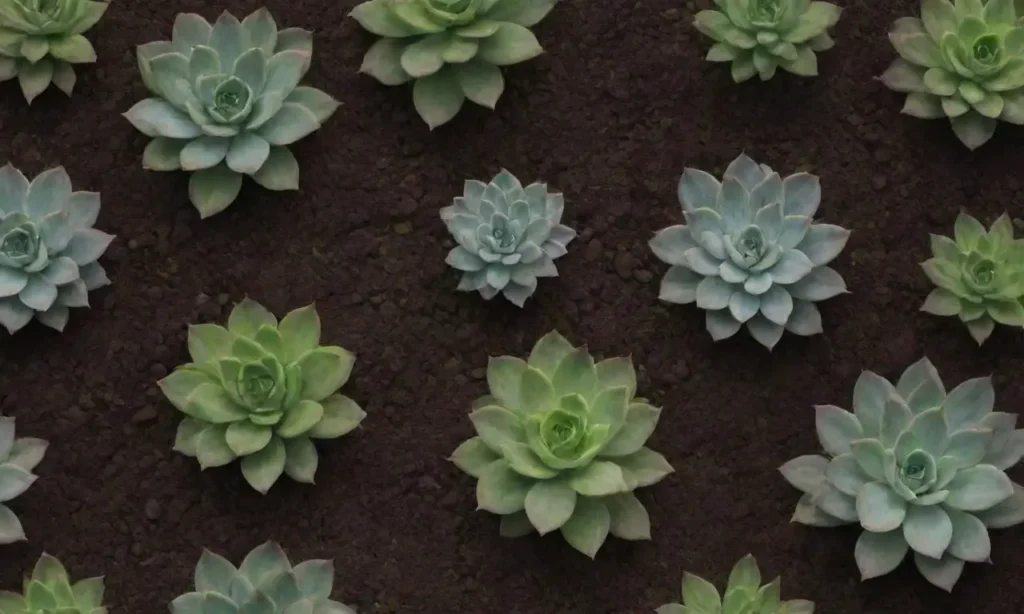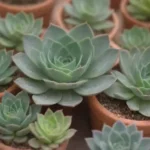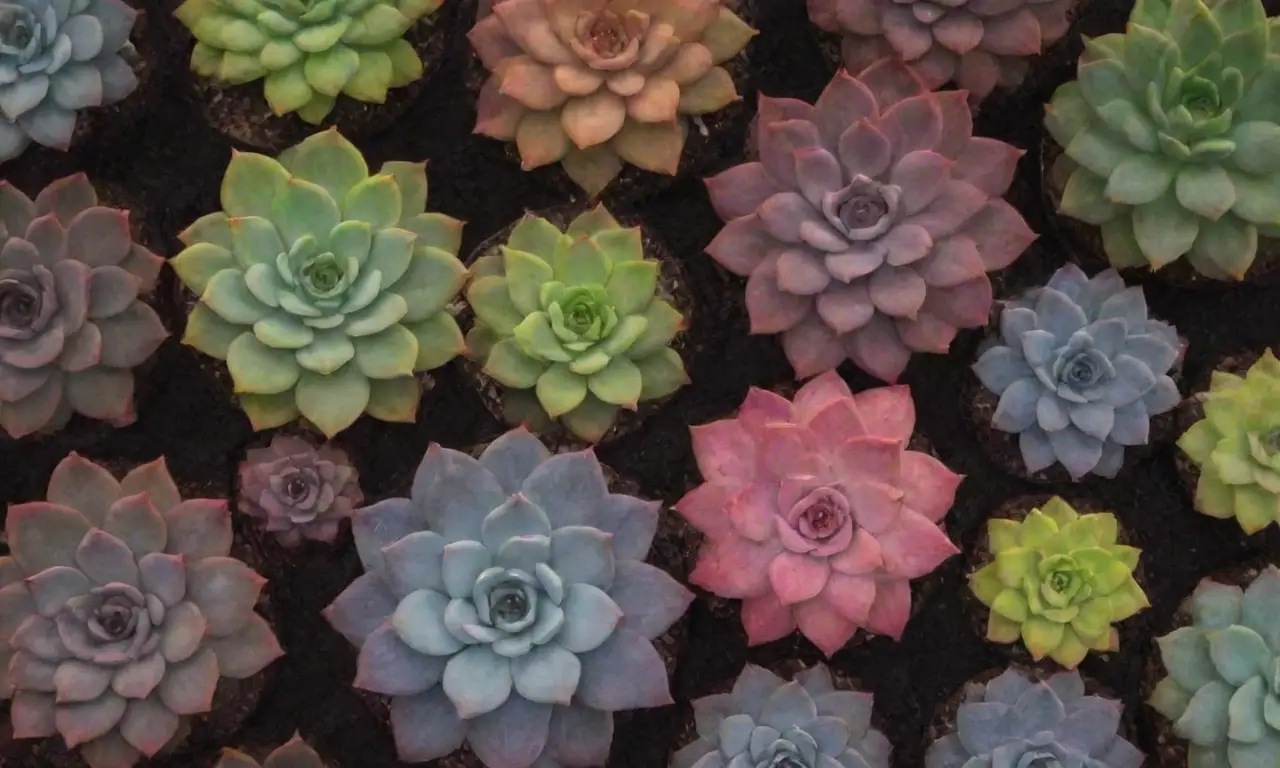Exploring the Use of Biochar in Succulent Soil Amendments

Introduction
Succulents are a group of plants that have adapted to arid environments, developing unique structures to store water, which makes them increasingly popular among gardeners and plant enthusiasts. Given their specific requirements for soil, soil amendments play a crucial role in creating the ideal conditions for these hardy but delicate plants to thrive. One promising and often overlooked soil amendment is biochar. Derived from organic materials through pyrolysis, biochar offers a range of benefits that can significantly enhance the growth and health of succulents.
This article aims to provide a thorough exploration of the use of biochar in succulent soil amendments. We will delve into the composition and characteristics of biochar, examine its benefits in succulent cultivation, and discuss best practices for incorporating it into your gardening routine. By the end of this article, you will have a comprehensive understanding of how biochar can be a game-changer for succulent care.
What is Biochar?
Biochar is a carbon-rich product obtained by pyrolyzing organic material, such as wood, crop residues, or other biomass, in the absence of oxygen. This process not only traps carbon within the biochar structure but also eliminates many volatile compounds found in the original biomass, making it a stable form of organic carbon. Biochar differs from regular charcoal, as it is specifically designed for agricultural and environmental purposes rather than for fuel.
One of the remarkable features of biochar is its porous structure, which resembles a sponge when viewed under a microscope. This porosity provides a vast surface area that can host beneficial microorganisms, retain nutrients, and hold water. When biochar is added to soil, it reacts with soil components to create an ideal habitat for beneficial microbes, improve soil aeration, and enhance water retention—all characteristics that are particularly beneficial for succulents.
The characteristics of biochar vary based on several factors, including the feedstock used in its production and the temperature during pyrolysis. Higher production temperatures generally result in biochar that has greater stability and lower levels of nutrients. This variability means that when choosing biochar for soil amendments, it's important to consider these characteristics and select an appropriate product tailored to the specific needs of succulents.
Benefits of Biochar for Succulents
Enhanced Nutrient Retention
One of the most significant benefits of incorporating biochar into succulent soil is its ability to enhance nutrient retention. Traditional potting mixes often leach nutrients quickly, especially when watering succulents, which can result in nutrient deficiencies. Biochar's porous nature allows it to capture and hold essential nutrients such as nitrogen, phosphorus, and potassium, making them available to succulent plants over an extended period.
Furthermore, biochar can help to buffer soil pH levels, ensuring that essential nutrients remain accessible in forms that succulents can absorb. This buffering capability is particularly vital for plants sensitive to pH shifts, ensuring that they have consistent access to the nutrients they require to thrive. By improving nutrient retention, biochar not only supports healthy growth but also helps to prevent the need for frequent fertilization, contributing to a more sustainable gardening practice.
 The Best Store-Bought Soil for Succulents: Our Top Picks
The Best Store-Bought Soil for Succulents: Our Top PicksImproved Water Management
Water management is critical for succulent care, given their unique adaptations for storing water. By incorporating biochar into the soil, gardeners can significantly enhance water retention capabilities without sacrificing drainage. Biochar's porous structure can hold water, reducing the frequency of watering required and mitigating the risk of overwatering—one of the most common mistakes made by succulent growers.
When water is added to a soil mix containing biochar, the material swells and acts as a reservoir, slowly releasing moisture to the plants as needed. This gradual release helps prevent root rot in succulents, which can occur when soil remains soggy for extended periods. Additionally, biochar can improve soil aeration, allowing oxygen to reach the roots while still maintaining moisture levels appropriate for succulent growth.
Using biochar for water management also offers environmental benefits, helping to conserve water resources. In a world where water scarcity is increasingly prevalent, optimally managing water in gardens through sustainable practices like biochar application promotes not only healthier plants but also responsible gardening.
Promotion of Microbial Activity
Biochar serves as an excellent medium for promoting microbial biodiversity in soil. The stable carbon structure of biochar provides a habitat for beneficial microorganisms such as bacteria and fungi, which play a critical role in nutrient cycling and the overall health of soil ecosystems. This is particularly important for succulents, as they can benefit from the enhanced nutrient availability and the natural pest deterrent effects of certain microbial populations.
The presence of diverse microbial communities can contribute to the breakdown of organic matter and the formation of nutrient-rich compounds. This process, known as decomposition, further enhances soil health and fertility over time. By selecting biochar that has been inoculated with specific beneficial microbes, gardeners can effectively create a synergistic environment that supports the health of their succulent plants.
Furthermore, certain beneficial microbes can help suppress pathogenic organisms in the soil, providing an additional layer of protection for succulents against diseases and root rot. This natural pest control can lead to healthier plants and minimizes the need for chemical interventions, aligning with sustainable gardening practices.
Best Practices for Incorporating Biochar into Succulent Soil

 Features of Gritty Mixes for Optimum Succulent Growth
Features of Gritty Mixes for Optimum Succulent GrowthChoosing the Right Biochar
Not all biochar is created equal, which is why it’s critical to choose the right type for your succulent garden. Look for biochar that is produced from sustainable feedstocks, such as hardwoods or agricultural residues, and ensure that it has been properly processed to avoid contamination from unwanted substances. The ideal biochar for succulent soil amendments typically exhibits high porosity and low ash content, equipping it to offer the benefits discussed previously.
Additionally, consider the particle size of the biochar. Larger particles can improve soil aeration and drainage, while smaller particles can increase nutrient and moisture retention. A blend of different sizes can yield the best results, allowing for a well-balanced soil amendment. Always seek biochar that has been produced with best practices in mind, which will enhance its effectiveness as a soil amendment and contribute to sustainable gardening efforts.
Preparing Biochar for Use
Before incorporating biochar into your succulent soil mix, it’s advisable to "charge" it with nutrients. This can be achieved by soaking biochar in a nutrient solution, such as compost tea, diluted liquid fertilizer, or a solution of water and molasses. Charging biochar not only enhances its nutrient-holding capabilities but also helps to kickstart beneficial microbial activity within the biochar before it is introduced into the soil.
Once the biochar has been soaked and allowed to drain, it can then be mixed into your existing soil mix in a ratio that works best for your specific succulents. Common recommendations include mixing biochar into the potting soil at a ratio between 10% to 30%, ensuring that you still maintain a good balance with other soil components, such as sand or perlite, which facilitate drainage.
Monitoring Soil Health
After applying biochar to your succulent soil, it’s essential to monitor soil health over time. Regular assessments of soil moisture levels, pH, and nutrient content will allow you to gauge the effectiveness of your biochar amendments. Keeping an eye on the overall health of your succulents is also important; pay attention to signs of stress, such as yellowing leaves or stunted growth, which could indicate a need for additional adjustments.
Additionally, don’t hesitate to adjust the virgin biochar level based on the specific needs of your succulents as they grow. Different species of succulents can have unique requirements, and what works for one may not necessarily work for another. Mixing different kinds of amendments and observing how your plants respond can help refine your technique and contribute to long-term success in succulent cultivation.
Conclusion
Incorporating biochar into succulent soil amendments presents a robust opportunity to improve the health of these resilient plants. From enhancing nutrient retention and moisture management to fostering beneficial microbial activity, biochar offers numerous advantages that align perfectly with the unique needs of succulents. Embracing biochar not only enriches the plant's habitat but also paves the way for a more sustainable approach to gardening.
 Using Coconut Coir in Your Succulent Soil: Pros and Cons
Using Coconut Coir in Your Succulent Soil: Pros and ConsAs gardeners and plant enthusiasts begin to explore biochar, the importance of quality and proper application should not be overlooked. With careful selection and preparation, biochar can provide a powerful resource for creating optimal conditions for succulent growth. Furthermore, adopting biochar-based practices contributes to broader efforts of enhancing soil health, promoting biodiversity, and conserving water resources.
In conclusion, biochar stands out as an innovative solution that addresses many of the challenges faced by succulent caretakers today. By leveraging the remarkable qualities of biochar, gardeners can cultivate thriving succulent gardens, all while engaging in responsible and sustainable practices that honor our environment. As we continue to seek effective strategies for nourishing our plants, let's not overlook the significant role biochar can play in our gardening endeavors. Happy planting!
If you want to read more articles similar to Exploring the Use of Biochar in Succulent Soil Amendments, you can visit the Soil Preferences category.
